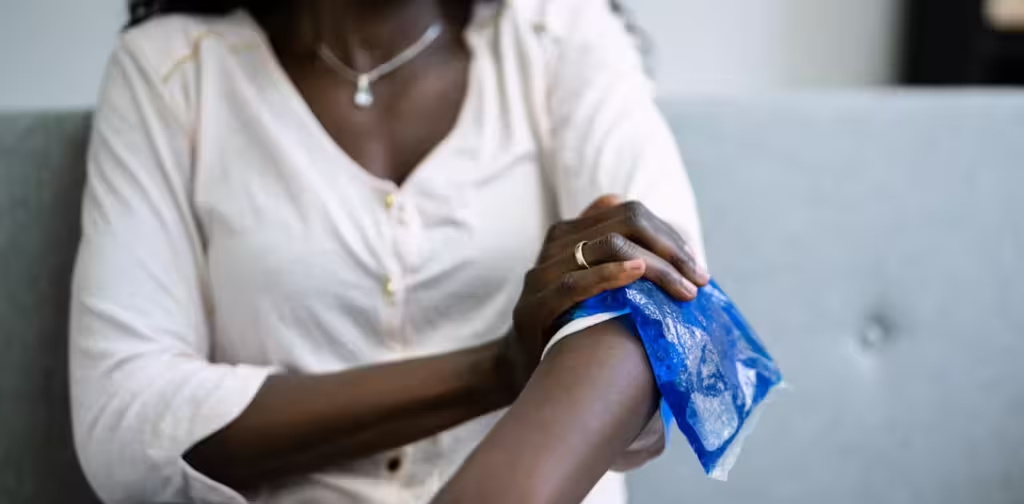
Cold therapy is typically applied after clotting has occurred and, therefore, does not impact haemorrhaging. It is important to note that while cold can prevent swelling, it does not actively reduce it. Additionally, cold therapy helps alleviate pain, enabling earlier and more vigorous active exercise.
Compression
Compression, or external pressure, increases the pressure outside the blood vessels. This process helps control edema formation and reduce swelling by encouraging the reabsorption of excess fluid. External pressure is most effective once edema has begun and remains beneficial as long as swelling persists.
For optimal results, compression should be applied within minutes of injury and maintained for at least 24 hours.
Applying compression promptly and maintaining it for at least 24 hours is recommended for several reasons:
1. Reduces Swelling: Compression prevents excessive fluid buildup in the injured area, helping to minimize swelling and inflammation.
2. Enhances Blood Flow: By supporting the affected tissue, compression improves circulation, ensuring oxygen and nutrients are delivered to promote healing.
3. Provides Stability: Compression helps stabilize the injured area, limiting movement that could aggravate the injury or slow recovery.
4. Speeds Up Healing: Sustained compression helps regulate the body’s inflammatory response, facilitating a faster recovery process.
By addressing these critical aspects, compression plays a vital role in effective injury management and recovery.

